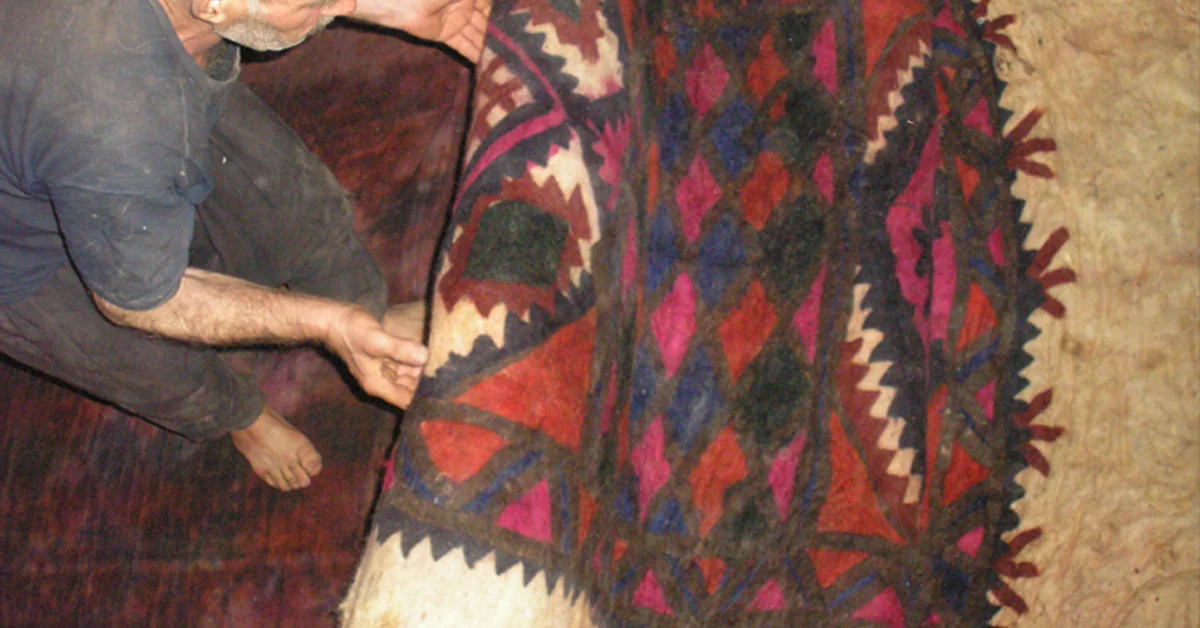by Annegret Hafner
I first encountered a felt carpet in August 2008 during my first journey to Syria. It caught my eye immediately upon entering a flat in Aleppo. It was a thick, dense, woolly carpet. Never before had I seen such a thick and robust felt. The carpet was 4 cm thick and was made of tough wool. I was wondering how, and with what effort, such a carpet is fabricated? With a carpet like this, the wool fibres often become matted during production due to the fulling movement and the addition of warm water and curd soap.
The process of how such a beautiful thing was produced was not to remain unanswered since, a short time later, I had the opportunity to visit one of the production facilities for felt carpets. I arrived in Al Bab, just one hour’s drive from Aleppo to the northeast, and I had high expectations to receive answers – the name of the place translates to “the gateway”. Al Bab is a small town with a village character, in which it was not easy to find the carpet factory. Maybe my answers wouldn’t be so easy to find afterall. We were driving from small streets into even smaller streets until we finally stopped in front of a garage. Standing in front were two large sacks filled with raw wool smelling of wet sheep, which reached my nose soon after our arrival.
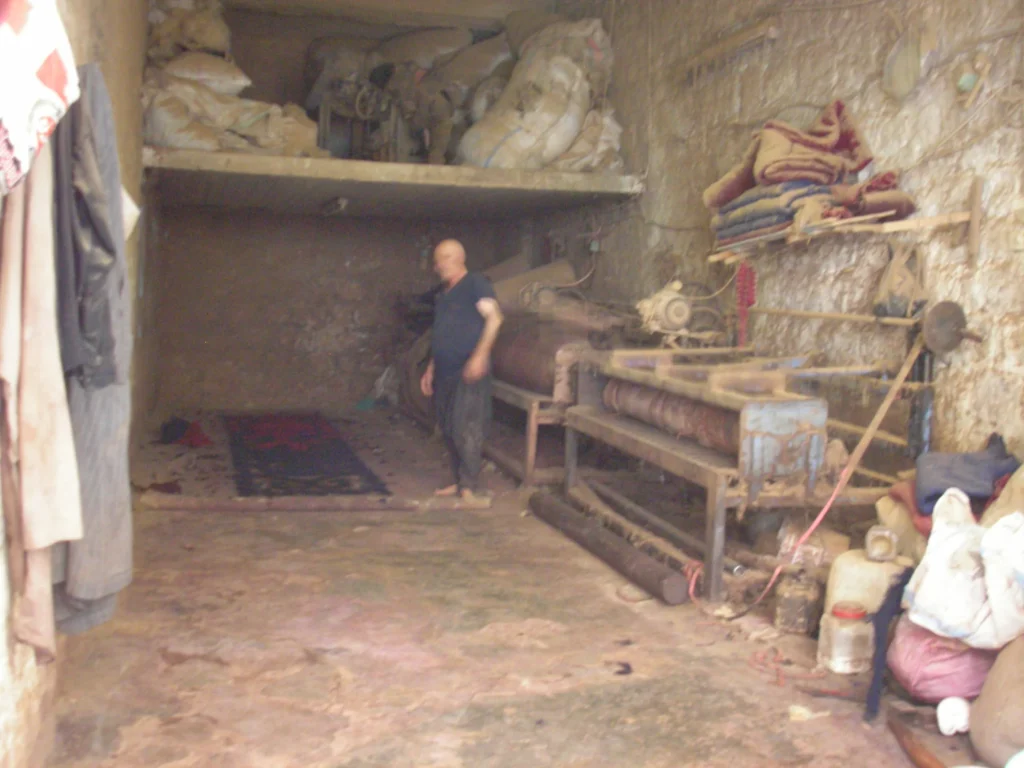
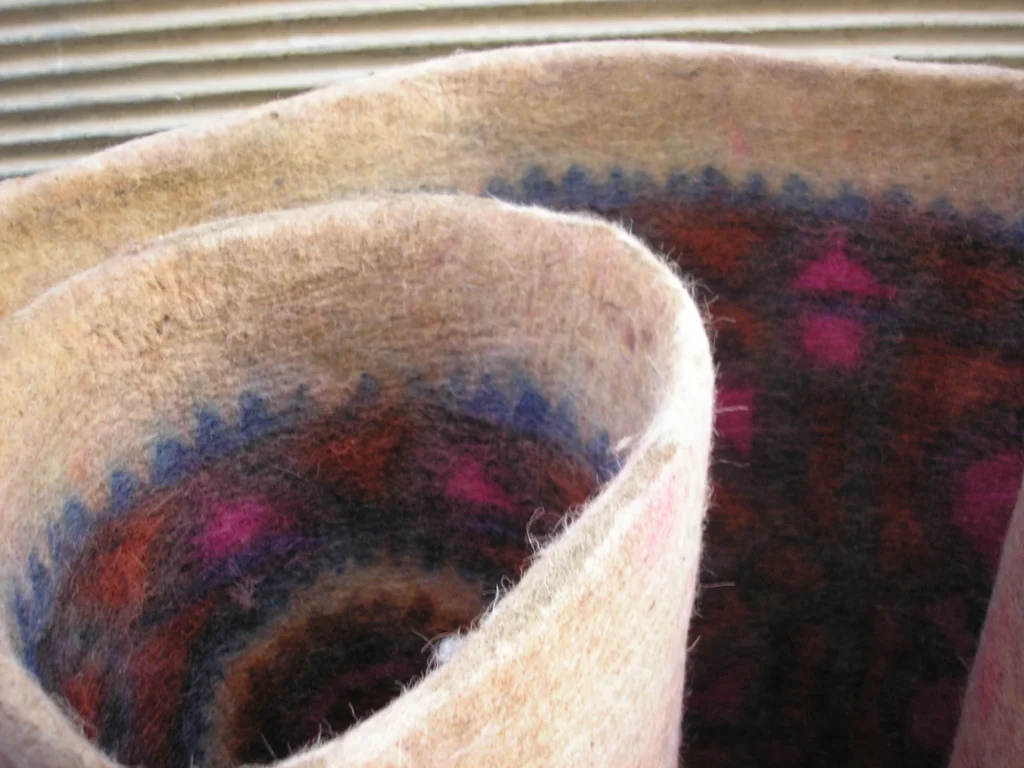
Fig. 1: A manufacturing facility for felt carpets in Al-Bab | Annegret Hafner (CC-BY-NC-ND)
Fig. 2: A robust 4 cm thick felt carpet made of wool | Annegret Hafner (CC-BY-NC-ND)
Monotonous, muffled sounds, which proved to be a by-product of the felt carpet fulling machine, came from the garage. I entered into a dark, narrow room full of dusty air and loud raucous noise from the farthest corner. The noise came from an iron machine, similar to a mangle although somewhat broader, that made a board drop down onto a rotating roller at regular intervals. A carpet in the making. In this way the machine took over the hard, manual work. The owner explained to me that certain processes had been automated almost 10 years ago. The machines were not only used in Al Bab, the centre of felt carpet production, but also in the countryside up to the border with Iraq. Previously, this work had actually been carried out by hand, or rather by foot. Two men would need 10 hours to produce a carpet like this; the machine took 24 hours. But when you think of the enormous effort required, then the machine was a welcome relief.
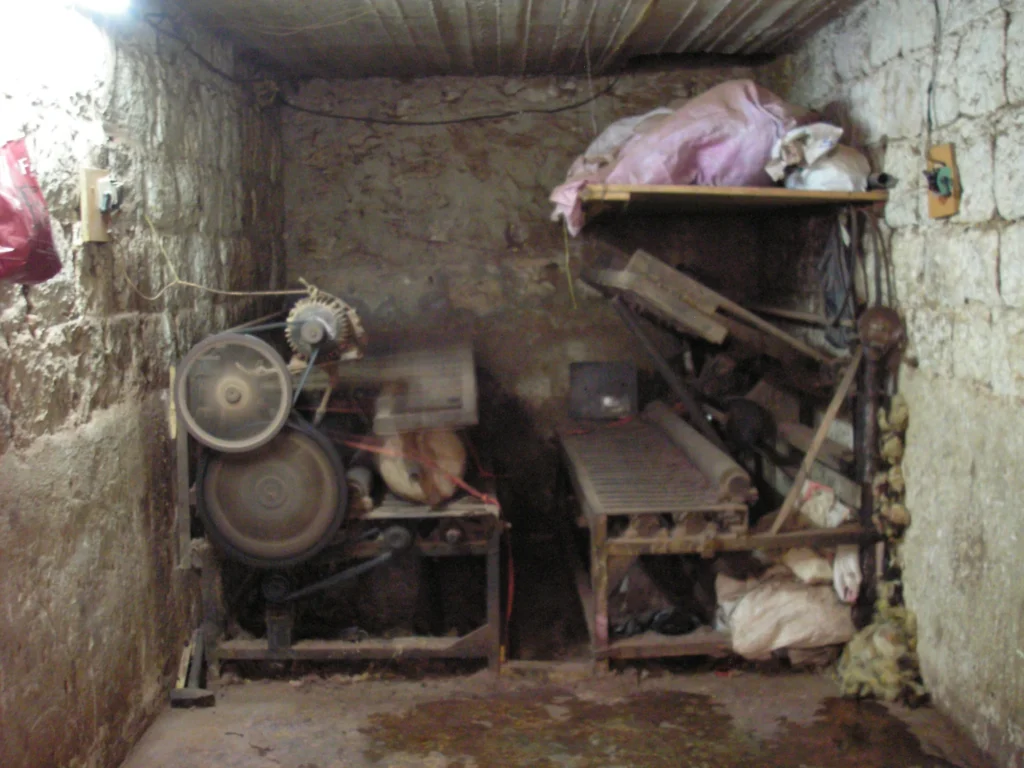

Fig. 3: A self-manufactured fulling machine at work | Annegret Hafner (CC-BY-NC-ND)
Fig. 4: A carpet manufacturer rolls out a finished feld carpet in Al-Bab | Annegret Hafner (CC-BY-NC-ND)
An old man in tattered clothes, his appearance characterised by his arduous work, beaming with delight, demonstrated to us what the foot work had been like earlier. With one leg on the carpet roll, the other on the floor, and his hands on his front leg for support, he trod energetically against the roll in a steady rhythm. This way, the roll was moved forwards until it could go no further and then the man simply changed direction.
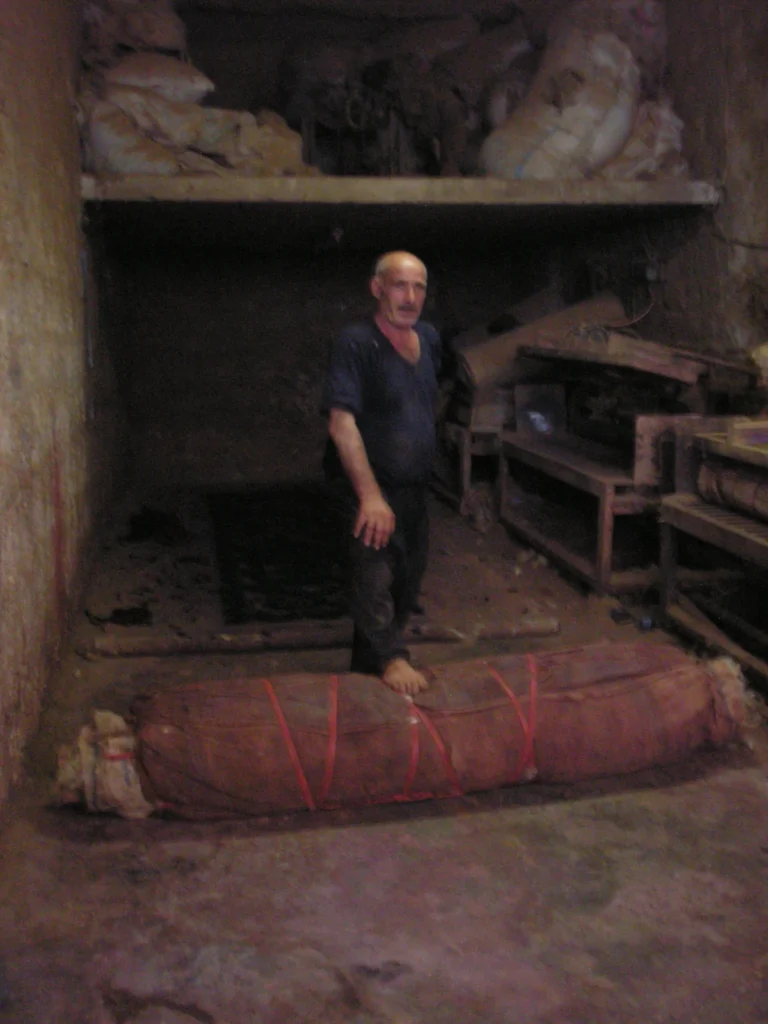
Astonishingly enough, there were still 400 workshops in Al Bab ten years ago (1998), a mere six of which had survived at the time of my journey in 2008. The automated production, the new use of polypropylene and acrylics together with the immense physical effort had the effect that this trade was no longer worth it in terms of health and time. Many feltmakers developed lung cancer from the wool dust. This craft seemed to be on its last legs. Yet it still existed in the countryside, although with the aid of machines.
I was lucky in the neighbouring garage, where a carpet was in the process of being prepared, when I entered the rear part of the garage. The design, in the form of a stencil, was laid out on the ground in full size. The workers had already started spreading the coloured wool on the template. At first, the carpet in the making is built with the top side facing downwards. The design is mirrored. The extremely brilliant wool is built up layer by layer and finally covered by the wool in the base colour. Six kilos of wool are needed for one square metre of carpet. On calculating the final size, an amount of 30% is usually deducted, which is lost due to the wool shrinking. This wool comes from the surrounding area, or the customer brings the wool into the workshop themselves. Unfortunately, I wasn’t shown the following steps of the process. It can be assumed that the surface area is subsequently wetted and wrapped in cloth. After that the surface area is rolled up and laid in the machine. After two hours the roll is taken out, unrolled, turned over and then rolled up again. This is continued through to the final stage until the wool has become firmly matted and the desired size has been reached.
Back on the street I was presented with two other carpets, which were very vividly coloured compared with the previous one. Decorations in pink, red, lilac, and blue on a pale pink background. A very pleasant combination. I could imagine immediately what the effect of this carpet would be on the floor of a playroom, a bedroom, or for walking on. A firm yet warm surface which would stand out due to its uniqueness. This was the last time that such a carpet crossed my path.
